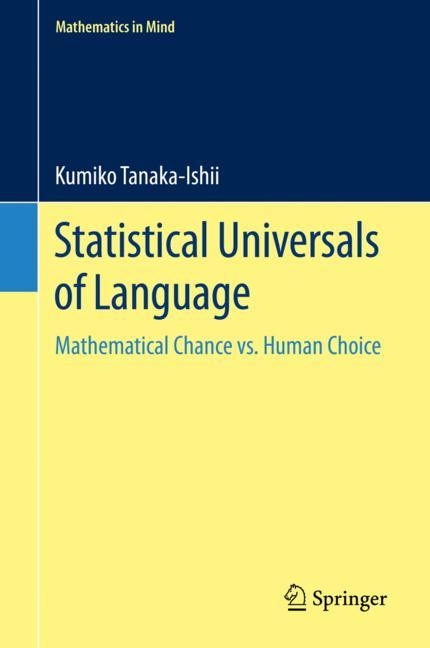
Statistical Universals of Language
Springer International Publishing (Verlag)
978-3-030-59376-6 (ISBN)
The main focus of the book further lies in explaining the property of long memory, which was discovered and studied more recently by borrowing concepts from complex systems theory. The statistical universals not only possibly lie as the precursor of language system formation, but they also highlight the qualities of language that remain weak points in today's machine learning.
In summary, this book provides an overview of language's global properties. It will be of interest to anyone engaged in fields related to language and computing or statistical analysis methods, with an emphasis on researchers and students in computational linguistics and natural language processing. While the book does apply mathematical concepts, all possible effort has been made to speak to a non-mathematical audience as well by communicating mathematical content intuitively, with concise examples taken from real texts.
I. Preface.- 1. Introduction.- 2. Universals.- 3. Language as a Complex System.- II. Property of Population.- 4. Relation Between Rank and Frequency.- 5. Bias in Rank-Frequency Relation.- 6. Related Statistical Universals.- III. Property of Sequence.- 7. Returns.- 8. Long-Range Correlation.- 9. Fluctuation.- 10. Complexity.- IV. Relation to Linguistic Elements and Structure.- 11. Articulation of Elements.- 12. Word Meaning and Value.- 13. Size and Frequency.- 14. Grammatical Structure and Long Memory.- V. Mathematical Model.- 15. Theories Behind Zipf's Law.- 16. Mathematical Generative Models.- 17. Language Models.- VI. Ending Remarks.- 18. Conclusion.- VII. Appendix.- 19. Glossary and Notations.- 20. Mathematical Details.- 21. Data.- References.- Index.
"The chapters and the parts are intelligently curated and well-thought-out to give the subject matter a free-flowing and coherent structure. ... The book has a lot of exciting discussions on offer. ... the book has a lot to learn from. ... The book is unique in the sense that language is presented ... . The book provides excellent food for thought. ... the book is worth every single second that a reader would be spending on reading it ... ." (Firdous Ahmad Mala, risingkashmir.com, January 25, 2022)
| Erscheinungsdatum | 08.04.2021 |
|---|---|
| Reihe/Serie | Mathematics in Mind |
| Zusatzinfo | VIII, 236 p. 152 illus., 100 illus. in color. |
| Verlagsort | Cham |
| Sprache | englisch |
| Maße | 155 x 235 mm |
| Gewicht | 535 g |
| Themenwelt | Mathematik / Informatik ► Mathematik ► Angewandte Mathematik |
| Schlagworte | Complex Systems • entropy of natural language • Fractals • Heap's law • Zipf's law |
| ISBN-10 | 3-030-59376-2 / 3030593762 |
| ISBN-13 | 978-3-030-59376-6 / 9783030593766 |
| Zustand | Neuware |
| Haben Sie eine Frage zum Produkt? |
aus dem Bereich


